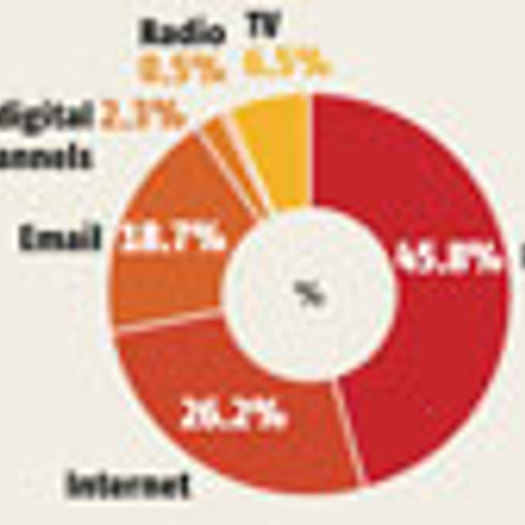Westfield is billed as upscale retail on a huge scale, and I was intrigued to see what, if any, print might be being deployed to encourage people to part with their cash.
CBS Outdoor manages the advertising sites within the 150,000m2 complex, which opened at the end of October. Print is the poor cousin. While there are 110 LCD panels and four “landmark LED screens” – one of which is the size of a 96-sheet poster – there are only 43 six-sheet poster sites. Using digital screens is allowing CBS to offer advertisers a far more customised service with the length of slot, the time of day and the location all customisable, and even the ability to update the message instantaneously.
At Westfield, networked digital technology is creating a medium that replaces what was once the preserve of print, and with which print just can’t compete. On the other hand, HP’s new applications harness the power of networked digital technology to create new applications for print.
HP’s MySpace deal is part of a flurry of activity by the firm at the start of October to deliver on the promise of its Print 2.0 strategy of driving print volumes. The deal with MySpace will make it possible for the social networking site’s 120m worldwide users to print from within the site via an HP-branded print button. Initially the button will enable users to print copies of the 4bn photos that are used in blogs, comments and messages. A future development will be the creation of personalised merchandise using those photos, which is likely to include items such as photobooks and calendars.
The MySpace deal was only one initiative for developing print volumes using the ’net that the firm announced at its annual Imaging and Printing conference in San Diego. It also announced HP Creative Studio and MarketSplash. HP Creative Studio is a portal for creative projects for both consumers and small businesses, where they can access HP and third-party print applications. Services include HP’s Snapfish photo-product site and Logoworks, its online design agency. Print products available include photobooks, greetings cards, calendars, business cards, stationery and marketing materials.
MarketSplash adds additional tools and products to Creative Studio for business including brochure design and production, website design and branding consultancy. These services are backed with a range of print options, including the ability to print on office machines, outsource for delivery or outsource to pick up from a local printer.
HP’s announcements have attracted extensive coverage from IT, media and business publications. It’s rare for a print story to have an impact in these sectors. If you were cynical, you might put it down to the attempt to link print to the world of ‘web 2.0’ being seen as anachronistic and, therefore, worth flagging up. However, it could be that HP’s Print 2.0 strategy is gaining ground and people do see new applications for ink on paper in an online world. The industry needs more initiatives like Print 2.0 to ensure there is business to replace what is being lost where print can no longer compete.
Two-minute takeaway on growing and declining print markets:
- Digital technology is acting to both expand and shrink the market for printed products depending on the market sector and application
- A new shopping centre, Westfield, in London highlights how the advantages of instantly customising and changing messages is leading to digital screens supplanting the printed poster
- HP’s Print 2.0 initiatives, including its tie-up with MySpace, the HP Creative Studio and MarketSplash, show how print can find new markets and outlets by leveraging the internet
- More should be done by printers to take advantage of web 2.0 to develop new applications and markets
for themselves







